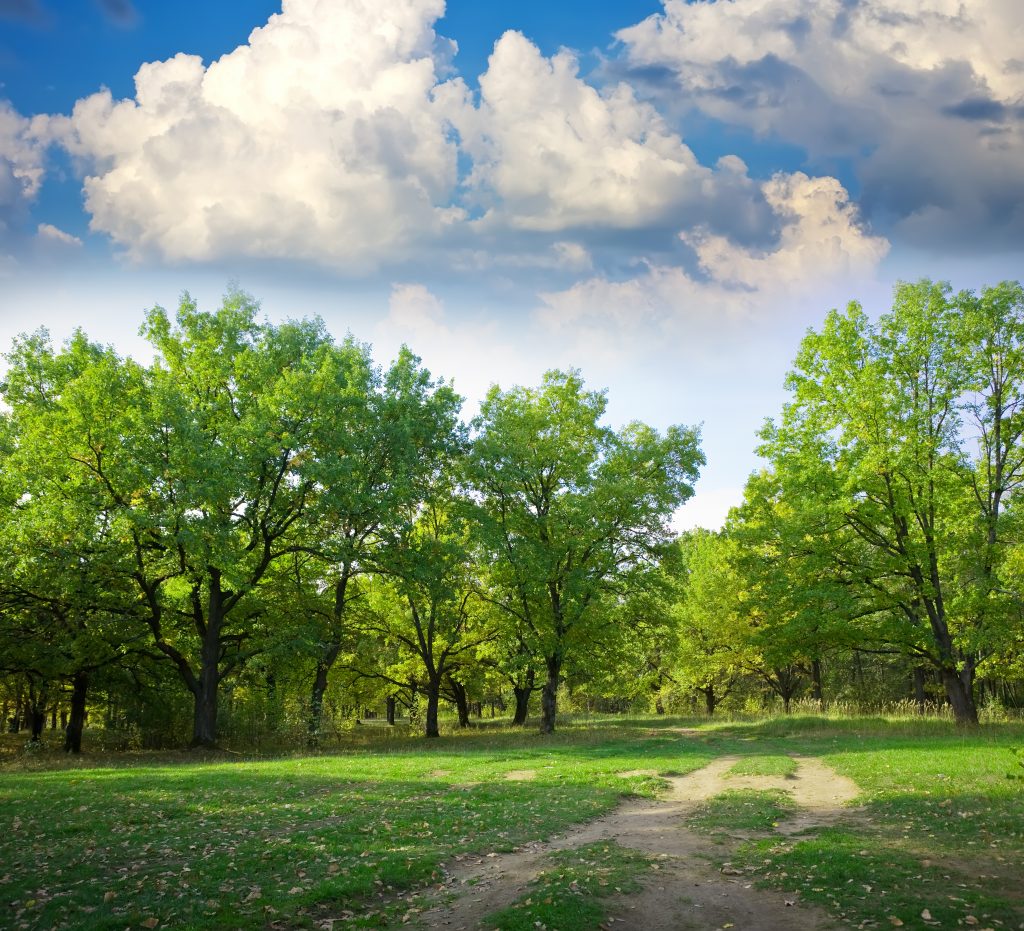THE SCIENCE BEHIND HOW TREES IMPROVE AIR QUALITY
The science behind how trees improve air quality involves a combination of biological, chemical, and physical processes that allow trees to effectively remove pollutants from the air and release oxygen. Trees play a crucial role in mitigating air pollution, contributing to cleaner and healthier environments. Here’s a detailed explanation of the science behind this phenomenon:

- Photosynthesis and Carbon Dioxide Absorption:
- Trees engage in photosynthesis, a biological process that uses sunlight, water, and carbon dioxide to produce energy and organic compounds.
- During photosynthesis, trees absorb carbon dioxide (CO2) from the atmosphere, incorporating carbon into their tissues and releasing oxygen (O2) as a byproduct.
- This process helps regulate atmospheric CO2 levels, a key greenhouse gas linked to climate change.
- Airborne Pollutant Uptake:
- Trees have specialized structures called stomata on their leaves that allow them to take in gases from the atmosphere, including pollutants.
- Pollutants such as ozone (O3), nitrogen dioxide (NO2), sulfur dioxide (SO2), and particulate matter are absorbed by the stomata and transported to various parts of the tree.
- Filtration and Deposition:
- Tree canopies act as filters, capturing airborne particulate matter on leaves and branches.
- Leaves’ rough surfaces and trichomes (fine hairs) can trap particles, preventing them from remaining suspended in the air.
- Rain or wind can then wash or dislodge the captured particles, effectively removing them from the air.
-
Biochemical Transformation:
- Trees have enzymes and biochemical pathways that can break down pollutants absorbed through their leaves and roots.
- Phytoremediation, the process by which trees metabolize pollutants, involves enzymatic reactions that transform harmful substances into less toxic or inert compounds.
- Some trees can metabolize volatile organic compounds (VOCs) released by industrial processes and vehicle emissions.
- Role of Microorganisms:
- Trees form symbiotic relationships with soil microorganisms in the rhizosphere (root zone).
- Microbes can break down pollutants and enhance soil health, aiding in the removal of pollutants from the surrounding environment.
- Root exudates (substances released by tree roots) can stimulate microbial activity, leading to the degradation of pollutants in the soil.
-
Ozone Reduction and VOC Emissions:
- Trees play a role in reducing ground-level ozone concentrations, a harmful air pollutant.
- While trees absorb ozone through stomata, they also emit volatile organic compounds (VOCs).
- VOC emissions can interact with ozone and other pollutants in the atmosphere, leading to the formation of secondary organic aerosols and the reduction of ozone levels.
- Oxygen Production:
- Trees are significant producers of oxygen through photosynthesis.
- While the oxygen contribution is smaller in comparison to total atmospheric oxygen, it is still essential for maintaining breathable air.
-
Climate Adaptation and Air Quality:
- Trees contribute to climate adaptation by mitigating urban heat island effects and reducing energy consumption for cooling.
- Cooler temperatures lead to less ozone formation and lower emissions of some air pollutants.
In summary, the science behind how trees improve air quality involves a combination of processes such as photosynthesis, pollutant uptake, filtration, biochemical transformation, microbial interactions, and emissions of VOCs. By harnessing these mechanisms, trees have a remarkable capacity to cleanse the air and enhance the quality of the environment in which they grow.
Importance of addressing air pollution
Addressing air pollution is of paramount importance due to its far-reaching impacts on human health, the environment, and the economy. Air pollution, which results from the release of harmful substances into the atmosphere, poses significant challenges that require immediate attention and effective mitigation strategies. Here’s an explanation of the importance of addressing air pollution:

- Human Health:
- Air pollution is a major public health concern. Exposure to pollutants such as fine particulate matter (PM2.5), ozone (O3), nitrogen dioxide (NO2), sulfur dioxide (SO2), and volatile organic compounds (VOCs) can lead to respiratory diseases, cardiovascular problems, and even premature death.
- Children, the elderly, and individuals with pre-existing health conditions are particularly vulnerable to the adverse health effects of air pollution.
- Respiratory and Cardiovascular Effects:
- Air pollutants can irritate the respiratory system, exacerbating conditions like asthma, bronchitis, and chronic obstructive pulmonary disease (COPD).
- Long-term exposure to air pollution is associated with an increased risk of heart attacks, strokes, and other cardiovascular diseases.
- Reduced Quality of Life:
- Poor air quality affects the overall quality of life for individuals in polluted areas.
- Respiratory discomfort, restricted outdoor activities, and limitations on physical exercise can diminish well-being.
-
Environmental Impact:
- Air pollution harms ecosystems, including plants, wildlife, and aquatic systems.
- Acid rain, which results from the deposition of acidic compounds from the atmosphere, damages forests, soils, and bodies of water.
- Pollutants can harm vegetation and disrupt natural processes, affecting biodiversity and food chains.
-
Climate Change and Global Warming:
- Certain air pollutants, known as greenhouse gases, contribute to climate change and global warming.
- Carbon dioxide (CO2) and other gases trap heat in the atmosphere, leading to rising temperatures, sea level rise, and altered weather patterns.
-
Economic Consequences:
- Air pollution imposes substantial economic costs. Healthcare expenditures, lost productivity due to illness, and premature deaths all result in economic burdens.
- Costs related to environmental damage, decreased agricultural productivity, and increased energy consumption further compound the economic impact.
-
Urbanization and Urban Heat Islands:
- Urban areas often have higher levels of air pollution due to concentrated sources such as traffic and industries.
- Urban heat islands, where urban areas are significantly warmer than surrounding rural areas, worsen air quality and contribute to health risks.
-
Regulatory Compliance and International Agreements:
- Addressing air pollution is a regulatory imperative for governments worldwide to safeguard public health and the environment.
- International agreements such as the Paris Agreement focus on reducing greenhouse gas emissions and improving air quality to combat climate change.
-
Equity and Social Justice:
- Air pollution disproportionately affects marginalized communities that are often located near pollution sources or lack access to clean air and green spaces.
- Addressing air pollution is an equity issue, ensuring that all individuals have the right to breathe clean air.
-
Sustainable Development:
- Achieving sustainable development goals requires addressing air pollution, as it intersects with goals related to health, environment, climate, and economic well-being.
In summary, addressing air pollution is essential to protect human health, preserve the environment, mitigate climate change, and promote a sustainable and equitable future. Collaborative efforts involving governments, industries, communities, and individuals are crucial to effectively reduce pollution levels and create healthier and more livable environments for current and future generations.
Trees’ Role in Improving Air Quality
Trees play a vital and multifaceted role in improving air quality by removing pollutants from the atmosphere and releasing oxygen. Through various biological, chemical, and physical processes, trees help cleanse the air in both urban and natural environments. Here’s an explanation of trees’ role in improving air quality:

-
Pollutant Absorption and Filtration:
- Trees absorb pollutants such as ozone (O3), nitrogen dioxide (NO2), sulfur dioxide (SO2), and particulate matter through their leaf surfaces.
- The leaf structure and stomata (pores) allow pollutants to be captured on the leaf surfaces, acting as a natural filter.
-
Airborne Particle Capture:
- The surfaces of leaves and branches can trap fine particulate matter (PM2.5) and larger particles, preventing them from remaining suspended in the air.
- Rain and wind can wash these particles off the leaves, effectively removing them from the atmosphere.
-
Chemical Transformation:
- Trees have enzymes and biochemical pathways that can break down pollutants absorbed through their leaves and roots.
- Some pollutants are transformed into less harmful compounds or stored within the tree’s tissues.
-
Biochemical Interaction:
- Trees interact with soil microorganisms in the rhizosphere (root zone), leading to the breakdown of pollutants in the soil.
- Microbes metabolize pollutants, contributing to their removal from the environment.
-
Volatile Organic Compound (VOC) Emissions:
- Trees emit volatile organic compounds (VOCs) as part of their natural processes.
- While some VOCs can contribute to air pollution, others react with ozone and other pollutants, reducing their concentrations.
-
Ozone Reduction:
- Trees help reduce ground-level ozone, a harmful air pollutant and major component of smog.
- Trees absorb ozone through stomata, and the emitted VOCs can participate in reactions that reduce ozone levels.
-
Carbon Dioxide Uptake:
- Trees absorb carbon dioxide (CO2) during photosynthesis, a process that also releases oxygen.
- While CO2 is not a traditional air pollutant, excessive levels contribute to climate change. Trees mitigate this by absorbing and sequestering carbon.
- Air Quality in Urban Heat Islands:
- Trees mitigate the urban heat island effect, where urban areas are warmer than surrounding rural areas.
- Cooler temperatures in urban environments lead to lower ozone formation and lessened emissions of certain air pollutants.
- Air Quality Improvement in Urban Areas:
- Trees planted strategically in urban areas can reduce the impact of pollution from traffic, industries, and other sources.
- They act as barriers, intercepting pollutants and preventing them from spreading.
- Long-Term Benefits:
- Mature trees have a cumulative effect on air quality improvement, offering sustained benefits as they grow and mature.
In summary, trees improve air quality through a combination of processes that involve pollutant absorption, filtration, chemical transformation, biochemical interactions, VOC emissions, and carbon dioxide uptake. By harnessing these mechanisms, trees contribute significantly to creating cleaner and healthier environments, mitigating the impacts of air pollution, and fostering more sustainable and livable communities.


Comments are closed.